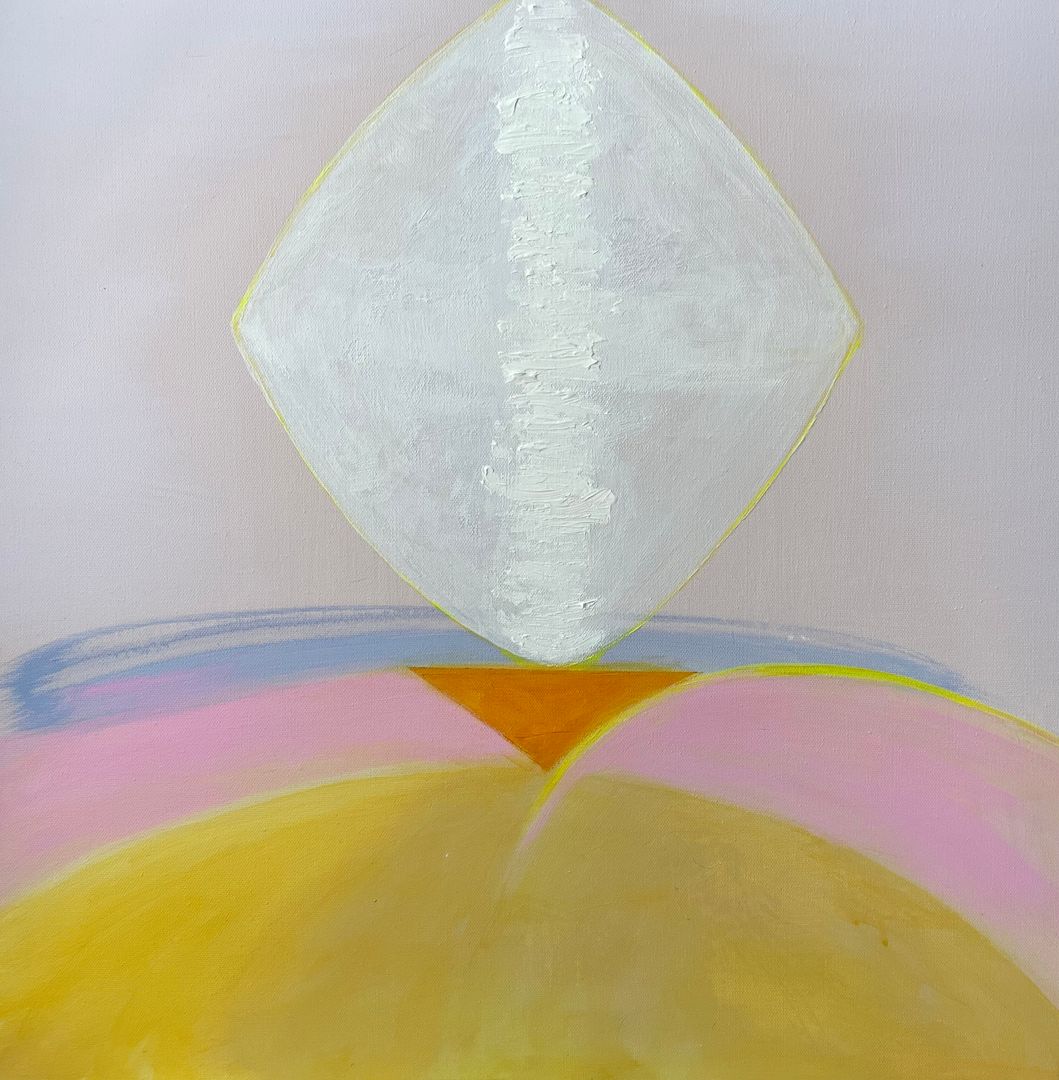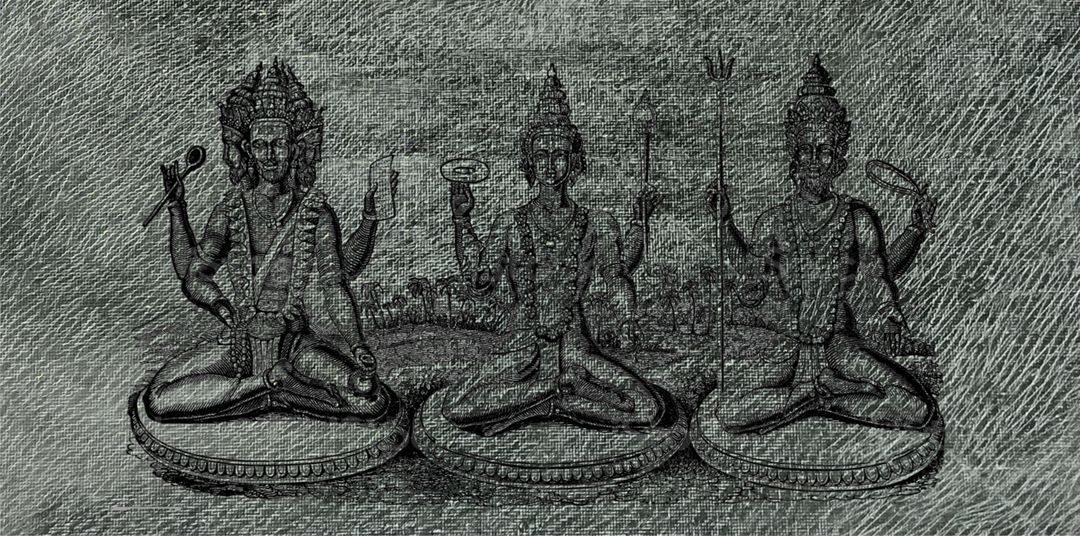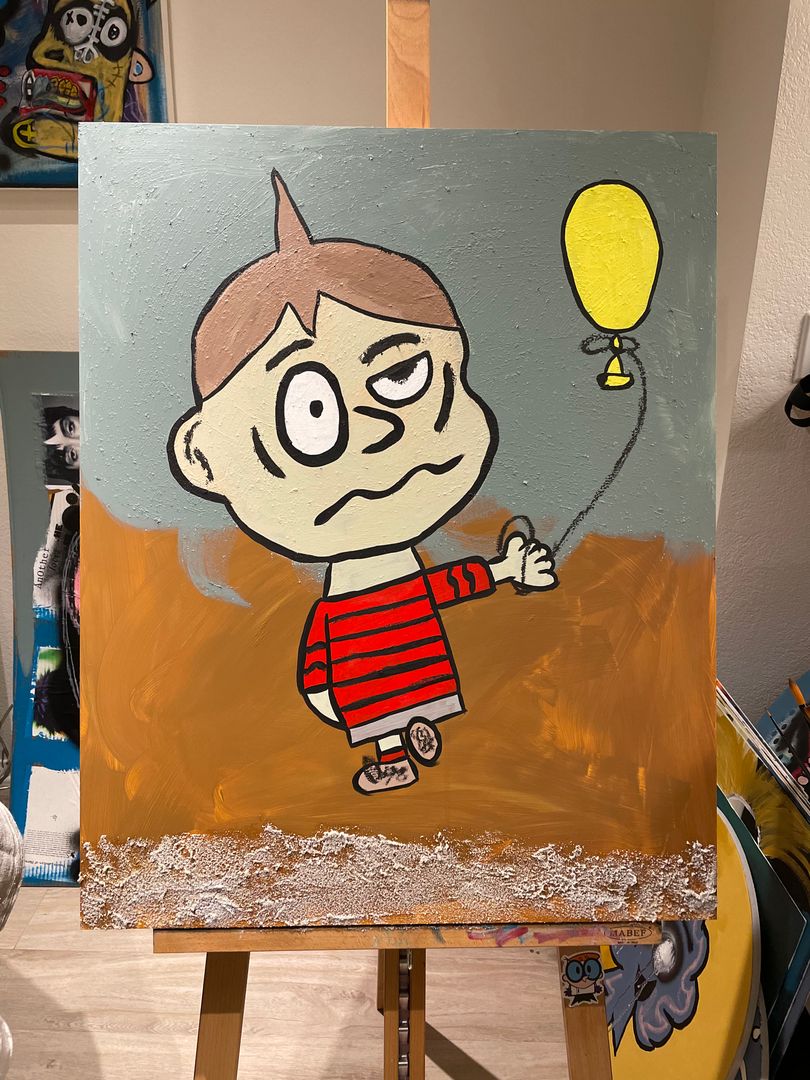Heart (Parts I)
Heart is the first of three pieces in the 'Parts' mini-series.
The heart, the uterus, and the brain. Where does my value lie? All three pieces were created on a base of collaged scraps of articles talking about depression and anxiety, assault, purity culture, and PCP’s along with acrylic paint and gesso. I started this series with questions in my mind about how our worth is defined, especially as women, women-identifying, and uterus-bearing humans. Is our worth in our society based on our ability or desire to produce children? How well we bear heartbreak and mistreatment? How well we contort ourselves into somebody else’s expectations and judgements? All of these things connect our mental and physical wellbeing, as well as our ability to succeed in all areas of our lives.
Responses (1)

March 18, 2022
Lynell Ingram’s Heart (Parts I) is an unflinching, complex, and undeniably brave look at the tremendous adversity women face in a patriarchal society. Like Heart (Parts I)’s collaged surface, sexism is a patchwork of different cultural biases, false dichotomies, hypocrisy, and centuries of cultural mores designed to keep women in a subservient position to their male counterparts and reduce their freedom to the greatest degree possible while still capitalizing off their labor.
The work is composed of an overpowering onslaught of text and image that mirrors the onslaught of discrimination women are subjected to since birth. When one’s worth relies on the opinion of others, and when one’s actions are judged and restricted by fictitious and scurrilous moral precepts, one lives in a prison. When desire is suppressed by fear of judgment, and when a person’s body is considered more important than their mind, they are reduced from a human to an object. Objects do not have rights; they do not have autonomy; they are at the will of their owners and have no avenue or expectation of making their own decisions. As Ingram highlights with the dismemberment of the heart, uterus, and brain, objectification lies at the heart of sexism because it is the most effective means of control. When you make someone into an object, and when you see someone as a collection of pieces instead of a unique individual, and when you categorize people in loose and ridiculous designations of "good" and "bad", you rob them of their humanity and their right to live on their terms (in essence, murdering their soul).
The history of the world is the history of power. How that power is gained and exercised is immensely complex, but culture is among the most cherished mechanisms of control (and, in my opinion, the primary one). Culture cannot only keep someone in a position of subservience but make them accept, proliferate, and pass on to future generations the subjectification. Cultural biases instill in those that hold them an excuse for their mistreatment of others and allow them to behave in a way that otherwise they would not, in good conscious. It provides for and provokes a level of evil that could only be so widespread when the victims are not considered fully human (every genocide in history—from chattel slavery, to the Holocaust, to the Rwandan genocide, and many more—is prepared and made possible by mass propaganda that designates the victims as sub-human).
Furthermore, it keeps most perpetrators from recognizing their own chains. When someone is helpless on a societal level, without options other than the narrow and repressive ones prescribed by the powerful few, the best way to keep them from rising up and tearing off their chains is to provide them with a sense of control and superiority over others so that they can maintain an illusion of power. People are far more likely to accept being treated like dirt if they believe they are not the lowliest of dirt. Furthermore, the accumulated rage of being powerless to construct your future can be diffused and redirected from the powerful few, who repress all, against someone who can be the punching bag for all your built-up fury. Throughout history and well into the present, women have been the recipients of this misplaced anger.
Culture has also been weaponized to keep women from self-liberation and make them hate themselves and their desires and needs. Almost every movie I grew up with that even approached the subject positions women into two categories: good women (someone you would marry) and bad women (someone you would scorn but desire). Men are indoctrinated from birth to discriminate against women, and women are brainwashed to discriminate against themselves and live under a perpetual blanket of guilt. We internalize this bullshit (sorry for my language, but I honestly don’t know what else to call it), and men come to hate women for exercising freedom, and women come to hate themselves for the crime of a liberated life. It is a cycle of misery and hostility that only serves the interests of the most powerful people, murders the possibility of equitable romantic relationships (the only kind worth having), and creates a constant stream of violence. Heart (Parts I) is not only aesthetically fascinating but also a courageous assault against the outrages of patriarchy. It reminds me of a quote by Karl Marx (no political agenda here, just a damn good and appropriate quotation): "The traditions of all past generations hang like nightmares on the brains of the living”.

- Category
- Provocative, Pop Art
- Type
- Mixed Media - Unframed
- Materials
- Acrylic, Particle board, Paper
- Dimensions
-
11.00 inches wide
14.00 inches tall
0.31 inches deep - Weight
- 1.50 lbs
- Location
- Arlington Heights, IL, US




